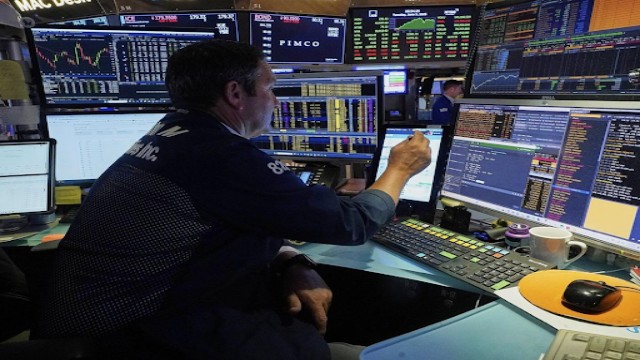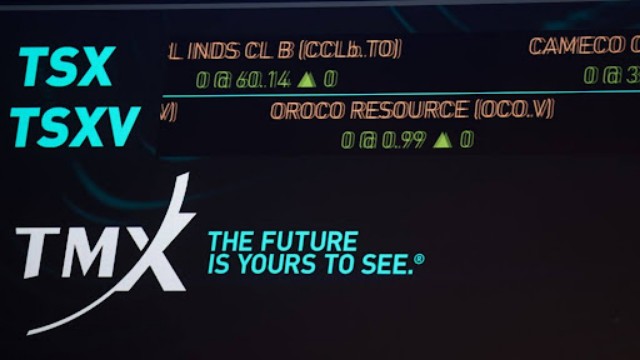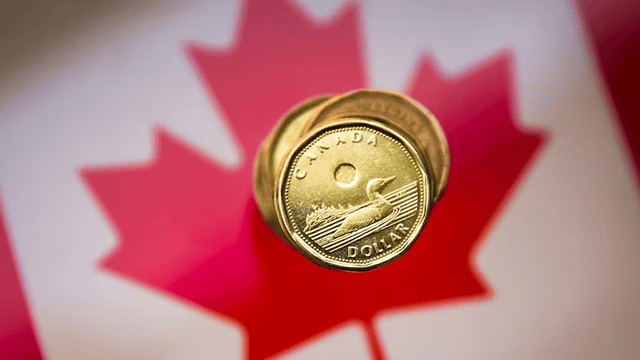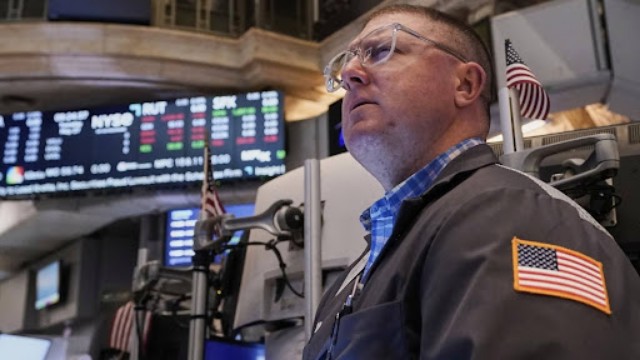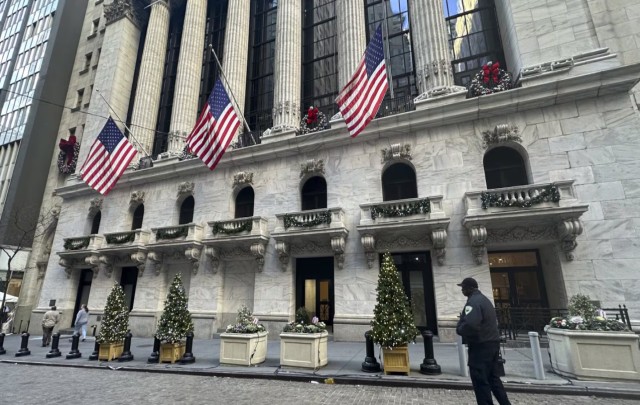
The New York Stock Exchange is pictured in Manhattan’s Financial District on December 31, 2024. (Photo: Peter Morgan, AP, File)
Wall Street closed a bumpy week on a positive note Friday, thanks to a strong performance from major tech companies. The week saw wild swings in investor mood—from fear to hope and back—mostly because of the uncertainty surrounding President Donald Trump’s trade policies.
The S&P 500 index rose by 0.7%, continuing a three-day winning streak. It’s now just over 10% away from the all-time high it set earlier in the year. The Nasdaq Composite did even better, climbing 1.3% as tech giants like Nvidia and Alphabet delivered strong gains.
However, the overall market was mixed. More stocks in the S&P 500 fell than rose. The Dow Jones Industrial Average edged up just 20 points—barely 0.1%—despite the tech surge.
Alphabet, the parent of Google, saw its shares jump 1.7% after it reported a 50% jump in profit for the start of 2025, easily beating expectations. Given its size and influence, Alphabet’s performance gave the S&P 500 a helpful push.
Nvidia, another heavy hitter, also lifted the market with a 4.3% gain. On the other hand, Intel dropped 6.7%, even though it exceeded earnings estimates. The company warned of ongoing uncertainty in the tech industry and gave a cautious forecast, which disappointed investors.
This trend of uncertainty extended to other sectors. Eastman Chemical shares slid 6.2% after it predicted weaker-than-expected profits this spring. CEO Mark Costa blamed rising economic unpredictability and confusion around tariffs for the gloomy outlook.
Skechers, despite reporting a record $2.41 billion in quarterly revenue, pulled back its forecast for the year. The shoe company said it couldn’t predict what’s coming next because of global trade tensions. Its stock fell 5.3%.
Many companies are now echoing the same concern: the unpredictability of Trump’s trade moves is making it nearly impossible to plan. Although there were signs earlier this week that Trump might ease up on his tariff threats, the frequent shifts in direction have rattled both businesses and investors.
There’s growing fear that these trade battles could push the economy closer to a recession. Smaller companies, in particular, are finding it hard to adapt quickly, as they often lack the resources to change their supply chains on the fly.
Despite the uncertainty, all three major indexes ended the week higher. The S&P 500 closed at 5,525.21, the Dow at 40,113.50, and the Nasdaq at 17,382.94.
Overseas, European stock markets made small gains, while Asian markets showed mixed results. Japan’s Nikkei 225 index rose nearly 2%, but Chinese stocks dipped slightly.
In the bond market, U.S. Treasury yields fell. The 10-year Treasury note dropped to 4.25%, continuing its recent slide after nearing 4.5% earlier this month. This decline suggests investors think the Federal Reserve might cut interest rates later this year due to weaker economic data.
Meanwhile, the U.S. dollar stayed steady after a recent dip, holding its value against other major currencies.



